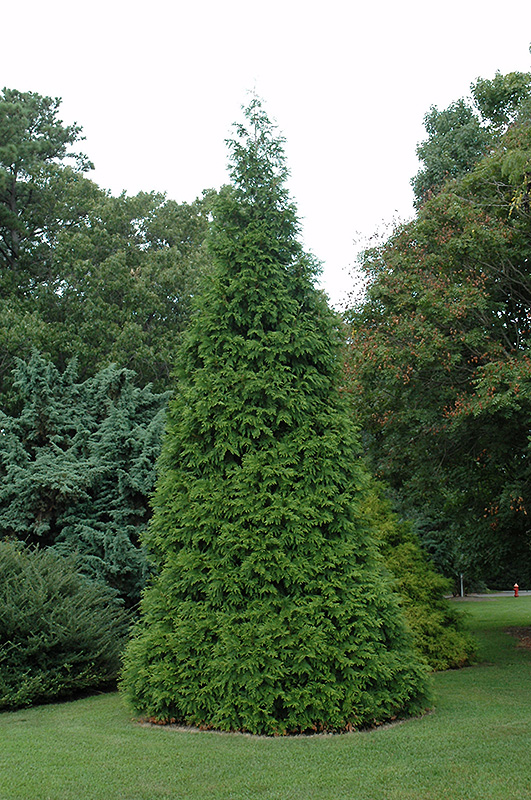Western Red Cedar, Green Giant Thuja 'Green Giant' Height: 30 feet Spread: 12 feet
Sunlight:
Hardiness Zone: 4b Other Names: Green Giant Arborvitae Description: A stately looking upright evergreen that grows uniformly and is perfect for privacy or wind screening; very resilient and resists ice and snow damage, grows in almost any soil type Ornamental Features Western Red Cedar, Green Giant is primarily valued in the landscape for its distinctively pyramidal habit of growth. It has rich green evergreen foliage. The scale-like sprays of foliage remain green throughout the winter. The shaggy brown bark adds an interesting dimension to the landscape. Landscape Attributes Western Red Cedar, Green Giant is a dense multi-stemmed evergreen tree with a distinctive and refined pyramidal form. Its relatively fine texture sets it apart from other landscape plants with less refined foliage. This is a relatively low maintenance tree. When pruning is necessary, it is recommended to only trim back the new growth of the current season, other than to remove any dieback. It has no significant negative characteristics. Western Red Cedar, Green Giant is recommended for the following landscape applications; Planting & Growing Western Red Cedar, Green Giant will grow to be about 30 feet tall at maturity, with a spread of 12 feet. It has a low canopy, and should not be planted underneath power lines. It grows at a fast rate, and under ideal conditions can be expected to live for 50 years or more. This tree does best in full sun to partial shade. It prefers to grow in average to moist conditions, and shouldn't be allowed to dry out. This plant should be periodically fertilized throughout the active growing season with a specially-formulated acidic fertilizer. It is not particular as to soil type or pH. It is somewhat tolerant of urban pollution. This particular variety is an interspecific hybrid. Special Attributes Evergreens need to be watered during the winter. Our desert climate especially in late winter to early spring evergreens can suffer during next growing season. An easy way to remember check for dryness on the holidays Halloween, Thanksgiving, New Year's Day, Valentines Day & Easter.![]()
![]()
![]()
![]()
![]()
![]()
![]()
![]()
![]()
![]()
![]()

